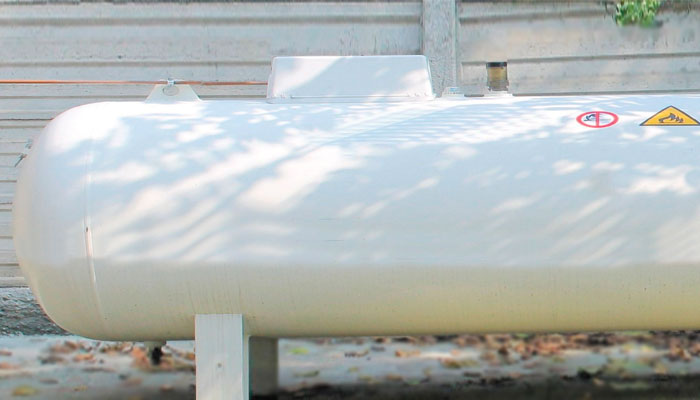All
NPGA: Be Prepared

When the National Propane Gas Association (NPGA) appointed a task force to study supply and infrastructure challenges in light of last winter’s supply shortages, marketer education was a top priority. The Task Force issued a set of marketer recommendations in May of this year that cover eight topic areas: demand forecasting, supply contracting, transportation and logistics, primary storage, marketer plant storage, customer storage, capital funding/cash flow management, and shale gas issues.
Here is a brief look at what the Task Force recommended.
Demand Forecasting
Begin by creating a forecast of projected demand for the coming year by considering past gallon sales and a review of future weather forecasts, among other factors. Also consider customer gains and losses. Long-term weather forecasts don’t offer much for planning, but a proactive marketer can use a 60-, 30-, or 15-day forecast to modify its supply plan as needed.
Most marketer supply planning is based around the concept of a normal winter, but a marketer should also consider the possibility that warmer-than-normal and/or colder-than-normal conditions may exist. Planning around possible colder conditions should include plans to have wet propane that can be acquired under conditions of market stress. Making changes to a supply plan, even only 30 days out, can mean the difference between success and crisis for a propane retailer during challenging times.
Supply Contracting
- Evaluate the provider on its ability to provide wet product, particularly during periods of high demand. Prior experience, reputation in the industry, a supplier’s asset strength and underlying financial capability, and recommendations from other customers should all be evaluated before any supply contract is signed.
- Create a comprehensive supply plan. Monthly planning is recommended for all but the smallest companies. Learn allocation rules and be prepared to live with them. The key is to thoroughly understand the rules of the propane system where they source their product, and to also understand their supplier’s policies in any period of shortage. It is critically important to have peak demand gas contracted for well in advance of actual need.
- Contract for a significant portion of anticipated needs. After considerable discussion by the Working Group, the consensus was that a marketer should contract for approximately 50 to 70 percent of its supply as long as there is firm demand for the product. For areas where supply is difficult to source in winter or where outages are common, marketers should consider contracting at the higher end of the range.
- Prepare contingency plans for additional needs. Contingency gas may come at a premium, or there may be an upfront fee to reserve the right to procure the gas. The supplier will certainly have incurred extra costs to make this gas available, and marketers must build these extra costs into any supply plan.
- Build diversification into the supply plan.
- Be prepared to modify the plan proactively as the season progresses.
- Seek advice as needed.
- Perform for your supplier. Show the same commitment and reliability that is expected from the supplier. This includes paying promptly, purchasing according to schedule, and engaging in frequent communications.
- The supply landscape changes quickly. Be prepared to adapt.
Transportation and Logistics
Transportation planning goes hand-in-hand with supply planning and has many of the same characteristics. Marketers must decide whether to own their own transportation assets, to subcontract this role to outside contractors, or to have a blend of the two. If subcontractors are used, marketers must assess them for reliability and performance, just as they would their core propane suppliers.
If a marketer needs extra propane to meet seasonal or emergency demands, it may need to travel long distances to obtain it. Marketers should have discussions with carriers about the potential for traveling to distant storage caverns or other supply points if the need arises. Discussion points should include applicable freight rates and whether the carrier will have the equipment and personnel available to make the trips.
The need for long distance transportation of propane often occurs when the industry is at its busiest and equipment is in short supply. This reinforces the critical nature of pre-planning for marketers.
Also, the shale gas industry, which drills for natural gas in areas that are often not connected to pipeline infrastructure, is using much of the country’s gas transportation assets. These include propane transports and rail cars that have traditionally been used to support the retail propane industry. The retail propane industry now finds itself without the benefit of many of these assets, which makes the transportation portion of the supply puzzle much more difficult.
Primary Storage
Primary storage facilities generally consist of underground salt domes or caverns, which serve as the main repositories for propane storage in the U.S. Marketers can lease or sub-lease storage in these facilities and then load either transports or rail cars directly from the facility during peak season, or tender the gas for further movement in a pipeline system when needed.
The Working Group encourages marketers to explore opportunities for maintaining propane storage in primary caverns. Because these facilities have tremendous scale economies, primary storage is generally less expensive on a per-gallon basis than bulk plant storage. In addition, primary storage facilities are often gas trading hubs, so propane can be easily sold between marketers and suppliers at the facility of need without the propane having to be physically moved.
The 2011 PERC Supply Study noted that there is ample primary storage available in the U.S. for use by marketers, with 123 million barrels available for storage in 2011. The study notes that the industry generally stores less than 80 million barrels annually. The study highlights the critical need for marketers to store propane to alleviate regional supply shortages.
Marketer Plant Storage
The PERC Supply Study estimated that a marketer that turned over its storage inventory 14 times per year would have, on average, about 14 days of peak season demand on hand. The study found that marketers that responded to the survey actually turned their inventory 14.3 times per year, with the ratio differing slightly by size of marketer.
The study further showed that a significant percentage of marketers turned their storage at far greater rates than the average. Twenty-four percent of companies surveyed turned their storage more than 30 times per year, and 5 percent turned storage more than 50 times per year. The study concluded that these levels of storage may be inadequate, and that supply problems caused by this group could have an effect on the entire industry during peak demand. The study stated, “(Supply) problems caused to all are associated with the business practices of a few.”
The Working Group urges all marketers to evaluate their current plant storage situation, in light of this past season’s volatile supply situation. In particular, those marketers who turn their storage greater than 20 times per year are urged to analyze their storage needs.
Customer Storage
The 2011 PERC Study estimated that there was 111 million barrels of customer storage in the field, nearly equaling the total amount of primary storage capacity in the U.S, with an average tank size for domestic customers was 400 gallons. Aggregate customer storage is estimated at nine times aggregate marketer storage.
This sheer volume of customer storage in the field underscores the importance of filling customer tanks prior to peak season demand. The Working Group urges all marketers to implement programs aimed at ensuring customers are full prior to peak season. Areas of focus should include:
- Eliminating “will call” accounts
- Creating budget, pre-pay or metered programs to eliminate credit concerns
- Offering promotional pre-season fill rates
All marketers are urged to evaluate customer accounts to ensure that they are appropriately sized and to implement policies that encourage route filling and off-season filling. While there are challenges to modifying established practices and consumer behavior, one great benefit of succeeding with these changes is that they have the effect of increasing supply capacity with no additional capital investment on the part of the marketer or the industry as a whole.
Capital Funding/Cash Flow Management
This past winter heating season’s propane supply situation tested most marketers’ capital funding and cash flow management practices. The Working Group urges all marketers to be proactive by revisiting and strengthening their banking relationships and access to capital prior to the next peak season. Here are some possible steps for marketers to take:
- Communicate often and share corporate financial information with capital providers.
- Use information provided by NPGA and other groups to explain this season’s supply situation and how it affected business.
- Demonstrate that the business is creating or has created a supply plan that ensures that the negative consequences of any future supply shortages can be reduced.
- Explore increasing credit limits based on demonstrated needs and capabilities.
- Seek secondary sources of capital, such as other banking relationships, that can be called upon as needed.
Shale Gas Issues
The abundant shale gas supply creates both opportunities and challenges for the propane marketer in regard to supply planning. First, especially for those marketers located in proximity to shale production, shale gas creates an opportunity to purchase propane in the regional market, often at attractive prices.
The challenges are two-fold. First, shale production is taking over assets, such as transports, railcars, and pipelines traditionally used by the retail propane industry to move product during supply shortages. This reduces flexibility to move propane to areas of need quickly. Second, shale production, primarily because it is attractively priced versus traditional supply, can lure the marketer away from engaging in and then performing on traditional supply contracts. This can then have a negative impact on building winter allocation levels.
When considering purchasing propane produced with shale gas, marketers need to be aware that shale production is steady-state, and cannot ramp up or down based on seasonal demand. In fact, cold weather often reduces the ability for shale gas plants to make propane due to production constraints. Shale production can also be unreliable, and generally has little or no storage attached to it. When purchasing propane associated with shale gas, marketers need to ask themselves the following:
- What are the economic benefits of purchasing local production?
- Can a portion of these savings be used to procure secondary/emergency supply?
- How am I affecting my traditional supply contracts by replacing volume with shale production?
- What will I do if the local production goes off-line, especially during peak periods?
In summary, shale gas is here to stay. Marketers should embrace the opportunities, but be mindful of seasonal pitfalls and the larger strategic issues posed by it.
Related Posts
 The Possibilities of Renewable Propane
The Possibilities of Renewable Propane
Posted on March 13, 2024
 Propane Can Do That
Propane Can Do That
Posted on March 12, 2024
 Take Action and Take Control of Your Future at Industry Summit VI and Visions ‘24
Take Action and Take Control of Your Future at Industry Summit VI and Visions ‘24
Posted on March 11, 2024
Enter your email to receive important news and article updates.

